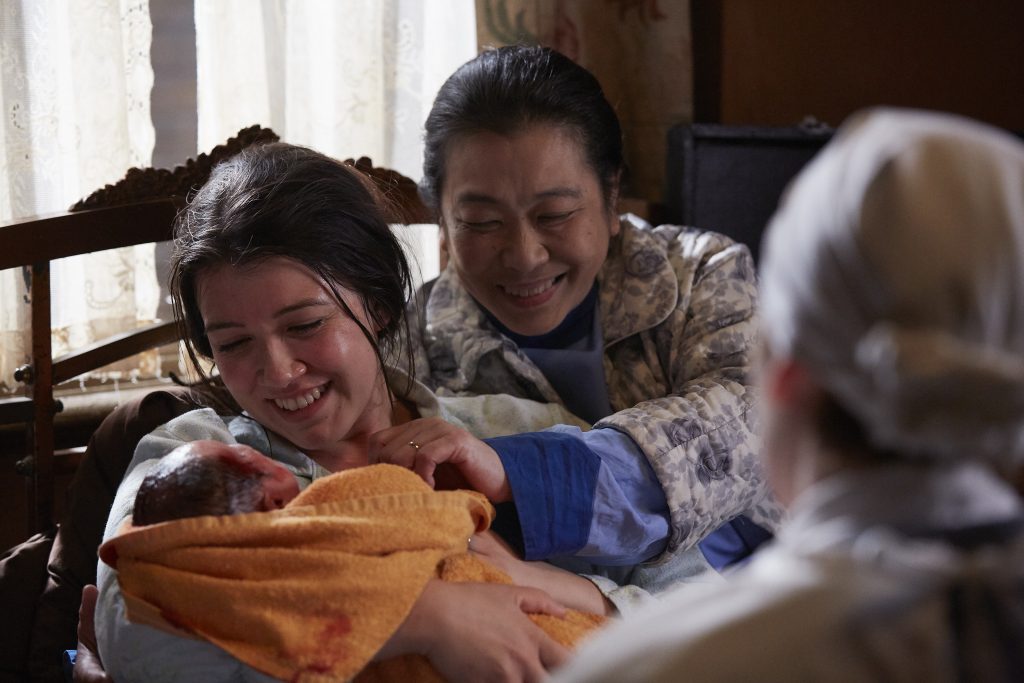Call the Midwife is back for a sixth season Sundays at 7 p.m., through May 21. Read the Vanderbilt University School of Nursing guest blog each Monday morning for historical and contemporary context about the previous night’s episode. SPOILER ALERT: Some posts may contain spoilers.

By Michelle Collins
Vanderbilt University School of Nursing
 Cultural customs surrounding childbirth are fascinating. Though the process of labor and birth is universal, the particulars of how it happens varies widely across cultures. Sunday’s Call the Midwife episode featured a woman whose mother-in-law wanted to employ various Chinese customs, like that of confinement, with her son’s family. The practice of confinement dictates that for 30 days after birth, the woman does not leave her home, does not shower or take a bath (she may freshen up with wet washcloths), and she must drink and eat only tepid or hot foods and beverages. To some, like the new mother in this episode, this custom may sound quite stifling, yet it is a cultural practice carried out even today among young Chinese mothers.
Cultural customs surrounding childbirth are fascinating. Though the process of labor and birth is universal, the particulars of how it happens varies widely across cultures. Sunday’s Call the Midwife episode featured a woman whose mother-in-law wanted to employ various Chinese customs, like that of confinement, with her son’s family. The practice of confinement dictates that for 30 days after birth, the woman does not leave her home, does not shower or take a bath (she may freshen up with wet washcloths), and she must drink and eat only tepid or hot foods and beverages. To some, like the new mother in this episode, this custom may sound quite stifling, yet it is a cultural practice carried out even today among young Chinese mothers.
Consider some of our distinctively American customs that probably seem just as foreign to outsiders, like inducing labor on a planned delivery date. Tibetans, for example, believe that a child should be born only at the time that he/she is destined because of the child’s foreordination (which entails being born under a particular star) in order to fulfill its potential. To interfere with that sacred timing – via induction of labor, for example – could have tremendous cultural impact and influence on the family. Where we choose to give birth is also greatly influenced by culture. Approximately 25 percent of births in the Netherlands occur at home, while the percentage in the U.S. remains less than 1 percent (0.92 percent in 20131). These are vastly different numbers, yet each reflects a cultural “norm.”
These differences lead us into the other theme of this episode, which was the movement of childbirth away from home and into large, centralized maternity units. Prior to the advent of maternity homes, births in the U.K. took place in the woman’s own home. Maternity homes provided care for women who faced more than average risk or an unsuitable home environment. In the early 1960s, birth shifted away from maternity homes to larger, more centralized hospitals. As the inspector visiting the maternity home in this episode tells Dr. Turner (played by Stephen McGann), a larger hospital maternity unit could easily subsume the maternity home’s four beds and provide care with a much greater degree of “efficiency.”
Let’s look at what efficiency has “done” for childbirth. The majority of babies in the U.S. are born Monday through Friday, between the hours of 7 a.m. and 5:30 p.m. (and most before noon). Tuesday is the day on which most births occur; Sunday is the day with the fewest births. At least one quarter of women choose to have non-medically indicated inductions of labor so they can plan the date, make sure arrangements are set at home and not have an unscheduled labor “interrupt” already very busy lives – efficient right? But convenience and efficiency (and all of the intervention that induction of labor entails) do not come without a price. The cesarean section rate in the U.S. has jumped more than 60 percent since the late 1990s.
As out-of-hospital birth in the U.S. gains in popularity, those of us in the trenches look optimistically forward to the reversal of some of the “efficient” birth trends of the recent past decades.
Michelle Collins Ph.D., CNM, FACNM, FAAN is a Professor of Nursing and Director of the Nurse-Midwifery Program, at Vanderbilt University School of Nursing.